The Earth Class 3 Notes Science
| Table of contents |

|
| Solar System |

|
| The Earth |

|
| Shape of the Earth |

|
| Movement Of The Earth |

|
| Conclusion |

|
Have you ever wondered where we live? We live on a big, round planet called Earth! It is like a giant home for all of us, including animals, plants, and even tiny insects. Earth has land, water, air, and everything we need to live. If you look at Earth from space, it looks like a beautiful blue and green ball. That’s because most of it is covered with water, while land has mountains, forests, and deserts. The Earth also moves around the Sun, giving us day and night and different seasons.
In this chapter, we will explore the shape of the Earth, why it looks different from place to place, and how it gives us everything we need to live. Get ready for an exciting journey to learn more about our amazing planet! Let’s begin by learning about our Solar System and where Earth fits in.
Solar System
- The solar system consists of the sun, eight planets, and their moons.
- The eight planets are Mercury, Venus, Earth, Mars, Jupiter, Saturn, Uranus, and Neptune.
- All these planets revolve around the sun.
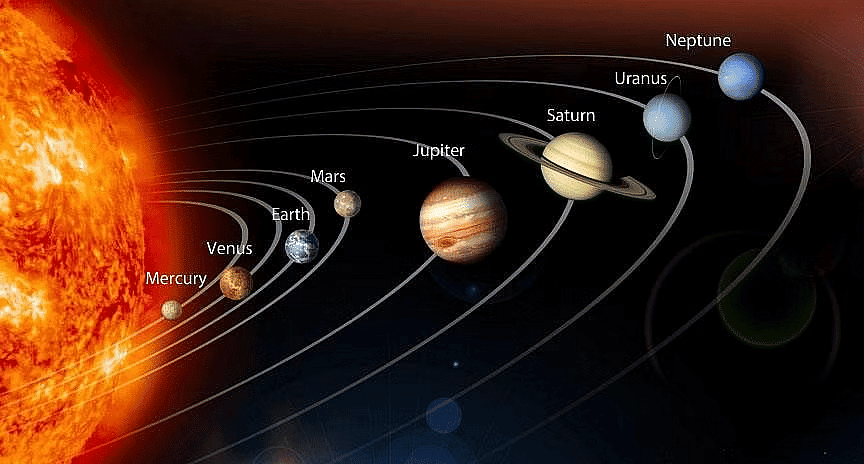 Solar System
Solar System
Among all these planets, Earth is the only one that supports life. This is because of the presence of air, water, and land. Let’s learn more about our home planet!
The Earth
- A long time ago, Earth was made from tiny pieces of dust and gas that came together to form our planet.
- It is the third planet from the Sun in our solar system.
- The Earth is also the fifth largest planet in terms of size.
- Earth is the only planet that can support life.
- The planet is made up of land, water, and air. About two-thirds of its surface is covered by water, while the remaining part is land.
- Surrounding the Earth is a layer of air called the atmosphere.
- Earth does not make its own light like some other space objects. It shines because it reflects light from the Sun.
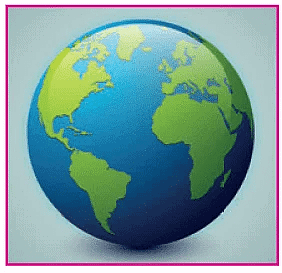 EarthBut what does Earth look like? Is it perfectly round? Let's find out!
EarthBut what does Earth look like? Is it perfectly round? Let's find out!
Shape of the Earth
The Earth is not a perfect round ball. It is a little flat at the top and bottom (poles) and slightly bigger in the middle (equator), like an orange. But overall, it still looks mostly round.
Here are some proofs that show the earth is spherical:
When the shadow of the earth falls on the moon, it is called the eclipse of the moon. This shadow is round in shape. This shows that the earth is spherical in shape.
When we look at a ship far away in the sea, we see the top part first, and then the rest of the ship appears slowly.
 Viewing of ship
Viewing of ship
Pictures taken from space by satellites and astronauts show that the Earth is round like a ball. These pictures help us see the real shape of our planet from high above.
Now that we know what Earth looks like, let’s explore how it moves!
Movement Of The Earth
The Earth is never still! It moves in two main ways:
- Rotation – Spinning on its own axis (causes day and night).
- Revolution – Moving around the Sun (causes seasons).
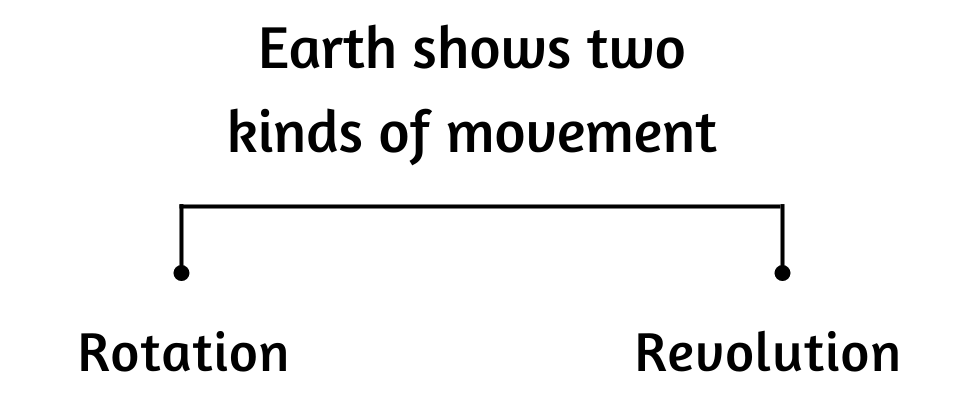
1. Rotation of the earth
- The earth moves round just like a top.
- It spins about an imaginary line passing through its centre called its axis.
- The spinning of the earth on its own axis is called rotation.
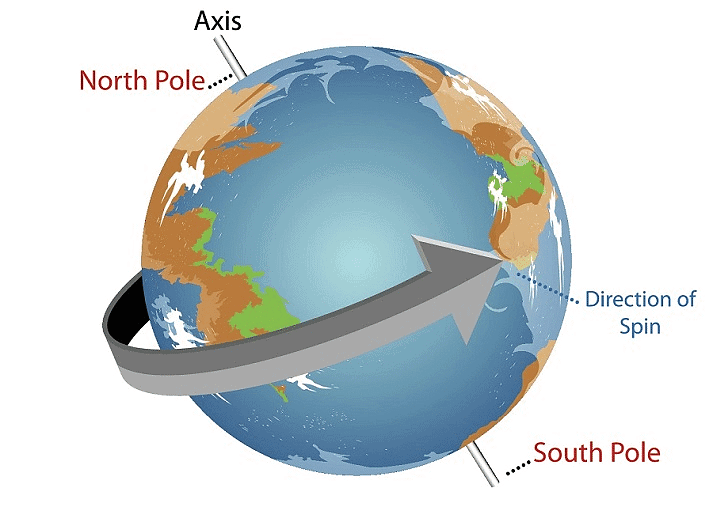
Rotation of the Earth
- The earth rotates from West to East and completes one rotation in 24 hours.
- The rotation of the earth results in day and night.
Formation of day and night
- The earth rotates from West to East.
- Half of the earth always faces the sun.
- The part of the earth that faces the sun experiences day.
- The other half, which does not get light from the sun, experiences night.
But Earth doesn’t just spin in place—it also moves around the Sun! Let’s see how this affects our seasons.
2. Revolution of the Earth
- The Earth also moves around the Sun in a path called an orbit.
- This movement is known as revolution.
- It takes the Earth about 365 days and 6 hours to complete one full revolution around the Sun, which is known as one year.
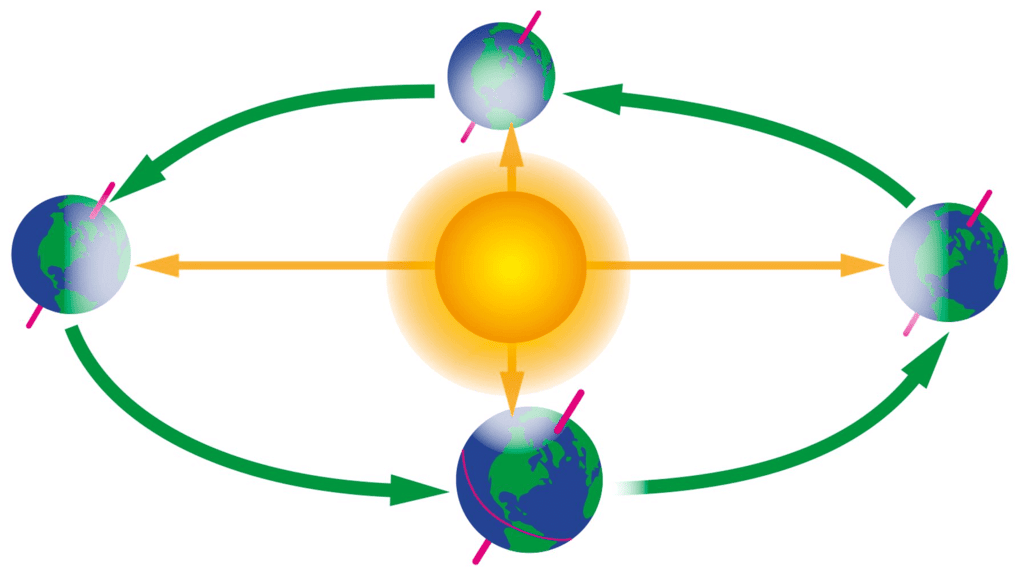 Revolution of the Earth
Revolution of the Earth - The Earth's movement around the Sun causes different seasons like summer, winter, spring, and autumn.
Conclusion
The Earth is a wonderful planet that gives us everything we need to live. It is part of the Solar System and moves in two ways—rotation (causing day and night) and revolution (causing seasons). By understanding the shape and movement of Earth, we can appreciate how our planet works and why life exists on it!
|
20 videos|203 docs|32 tests
|
FAQs on The Earth Class 3 Notes Science
| 1. What is the shape of the Earth? |  |
| 2. How does the Earth move? |  |
| 3. Why is the Earth's shape important? |  |
| 4. What are the effects of the Earth's rotation? |  |
| 5. How does the movement of the Earth affect seasons? |  |





















